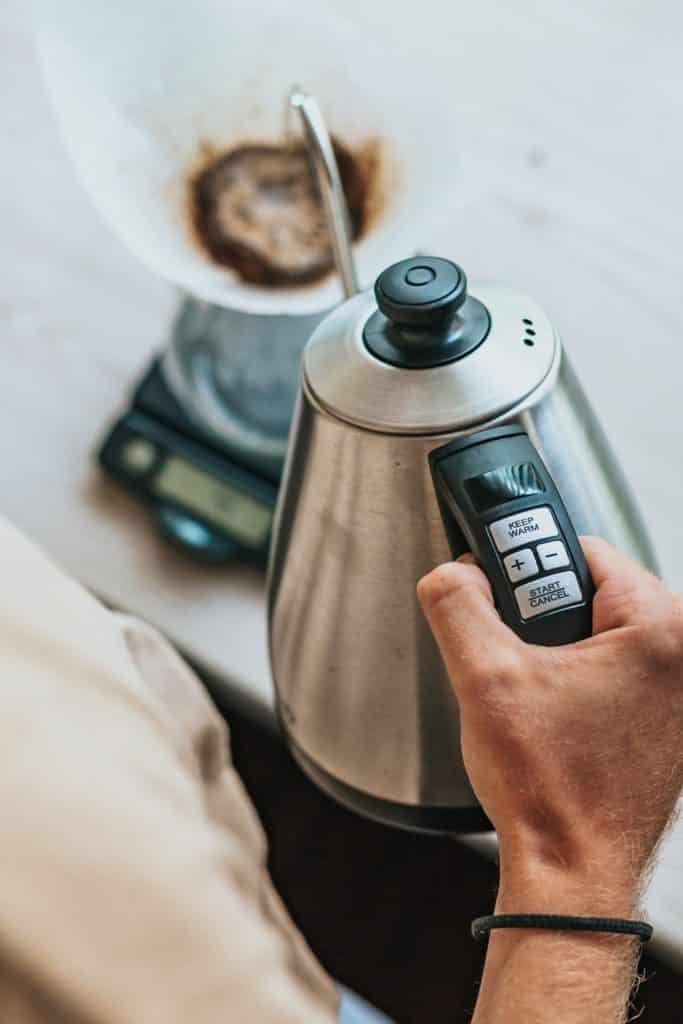A smart way of living goes a long way in cutting down on expenses, including electric bills.
Let’s face it! Who wants to waste money on their power bills when there are so many fun and productive ways of doing it?
And conserving energy is not only better for your pocket, but the environment as well. But quite often, it’s confusing for any anyone to decide on the right energy-saving methods to implement around the house.
So, in our guide today, we list out comprehensive methods that you can follow. And ranging on their levels of difficulty, from beginner to intermediate, you can pick the ones that suit your home and lifestyle the best.
So, sit back and read along.
Learn How to Save on Electric Bill Right Now
Beginner Level Power Saving Tips & Tricks
We highly recommend this level of power saving for those homesteaders who don’t have much time to make a lot of changes around their house. But are looking for simple DIY ideas that can help reduce some of their monthly electricity charges.
The tips we provide under this category are extremely easy to follow and quite effective in bringing down those power bills.

-
Switching off the phantom loaders.
So what is a phantom loader? There are a lot of household devices like the coffee maker, that have specific inbuilt features (like a clock and timer) that make them run all day. So when still plugged in, these devices create a ‘phantom load’ that uses up electricity even when not in use.
An easy solution to this would be unplugging them whenever you leave the house or when they’re not in use. You can even make the whole process simpler, by hooking up all your kitchen appliances to the same power strip and turning them off all at once.
-
Raising the refrigerator temperature up a notch
Yes! You did read it right. Increasing the temperature of your refrigerator a few degrees can significantly reduce electricity consumption without spoiling any of the food inside.
The fresh section of any modern-day refrigerator has its ideal cooling range at around 36-38 degrees Fahrenheit. But most fridges will be programmed to have their temperature at 2-5 degrees lower than that range.
And for the freezer compartment, on the other hand, all you have to do is set it between 0 to -5 degrees. So, increasing the temperature slightly will not harm your food in any way.
-
Stock up your fridge and freezer
When you have your refrigerator completely stocked out, they require much less energy to preserve your food. As a full fridge is able to regulate the temperature throughout itself better, it draws much less electricity and tones down the power bills.
But if you’re a minimalist and don’t grocery shop much, then stocking up your fridge can be a somewhat tricky task. Luckily, there is a way in which you can keep it full, and all you have to do is use bags of ice or pitchers of water to fill out the empty spaces in the fridge.
Re-organizing the whole fridge is also an effective way of making sure that it runs efficiently.
-
Dish-washing instead of hand-washing
Hear us out on this before you jump to conclusions. Sure! A dishwasher draws much more energy upfront than hand washing. But hand washing your dishes will use up 9 times more water than what a dishwasher would on an entire load.
So a lower water consumption would mean using the water pump lesser. And a water pump uses up a significant amount of electricity on every use and the cost stacks up in the long run. Hence, by using a dishwasher not only are you saving water but power as well.
-
Dish-washing at night
Using electrical appliances at night can help minimize their power consumption. When compared to night, the energy consumption for any household peaks at daytime. So, during the times of multiple power usage; each appliance, including the dishwasher, tend to draw more energy to operate.
Doing dishes at night reduces your environmental impact along with saving you money. But for this method to work, you will have to rely on your electric appliance utility and your home thermostat as well.

-
Completely loading your dishwasher
Every time you plan on using the dishwasher, try loading it out completely. A fully packed washer saves up a lot of time and electric energy and reduces quite a substantial chunk of the monthly power bill.
Additionally, as you would be running it fewer times, it will significantly lower the water-to-dish ratio, and help you conserve a lot of water which frequent use and hand washing won’t.
-
Stop heat drying after you dish-wash
Turning off your heat dryer is another significant way of cutting down on your electric bills. What most people don’t realize is that, when you dry heat your washed plates, your dishwasher uses up over 15% more electrical power to get them dry.
Alternatively, why not just take them out after the wash and manually air dry them? Not only will this help you to save up, but prevent over-exerting your dishwasher, especially if you are packing it to the brim with dishes.
-
Thaw your food and cook with the lid on for the electric cooker
If you have an electric cooker, it’s better that you let your food thaw before attempting to cook it. This will require lesser time for it to prepare, and would also vastly lower the amount of energy needed.
Cooking with the lid on can also be an essential factor. Correctly using lids will not only cook your food better but also cut down the cooking time by half. And the physics behind it is pretty simple; utensil lids trap the water vapor in as you cook, which in turn ensures that you don’t lose any heat as you prepare the food.
-
Cleaning the dirt out of the clothes dryer
Keeping your clothes dryer clean, especially its exhaust will optimize the airflow through the duct, enhancing its efficiency and reducing the power cost. With just a lint remover kit, clean out the exhaust every month of all the grime and dirt. A clogged exhaust will not work correctly and use up unnecessary amounts of energy.
-
Using dry balls and washing laundry at night
Every time you wish to dry your wet clothes, try using a dryer ball; it can help you put your clothes in direct contact with the hot air coming out of the dryer chamber. This reduces the time it takes to dry the clothes, and as a result, you won’t have to use the dryer for long.
And just like the dishwasher, it’s beneficial to do laundry at night as well. As compared to the peak daytime, in the low traffic nighttime, your appliances will draw less energy and help you save up. You can truly save money by choosing to clean your clothes and wash your dishes after dark.
-
Washing your clothes in cold water
With the advances in modern technology, no washer or washing machine require hot water to effectively clean clothes anymore. Cold water has become just as effective, so turning on the heater in the washer is no more necessary.
The heater inside washing machines (may it be top load or front load) requires a good deal of power to get the water hot. Using cold water to wash clothes, cuts down on your electric costs significantly.
-
Line drying the laundry
Line drying is perhaps the most energy-efficient way of drying your wet clothes when air drying is not an option (during the wet seasons). Hence smaller items like gym clothes, pajamas, and underwear, can be quick-dried by lining them up and drying them simultaneously.
Line drying approximately saves you about $1.08 per load, helping you to cut down on a lot of power charges over time.

-
Using LEDs instead of bulbs
LEDs are the future to in-house lighting. And switching all of your bulbs to LED lights will effectively reduce your lighting charges by almost 4 times. They are brighter and much more durable than the standard bulbs, and they go a long way in saving you money on power bills, than any other home appliance.
-
Installing smart power strips
Plugs like smart power strips are amazing when it comes to separating energy loads based on how often you use a single electrical device. They are quite effective at saving power, as with their help, you can instantly turn off all devices hooked when you leave the house or when they’re not in use.
They are especially useful when you have a lot of phantom loaders lying around your home.

-
Using window shades during summer
Why invest in a power-hungry air cooler or air conditioner when window shades work just as fine?
Window shades effectively block out the heat that comes in through the windows. And according to some geological surveys, it wards off about 77% of the heat, that would have otherwise streamed through.
-
Cleaning out your windows during the wintertime
By cleaning, we mean thoroughly scrubbing out the grime and oil residues that may have accumulated on your windows, over the year. A clean window during the winter makes thermostats and electric heaters invalid in many areas.
Clean windows allow the sunlight to enter and naturally heat your home during the colder months. And if you have blinds, then along with being a good dust repellant, a window blind can also act as an insulator during night time, and not allow the heat from your home to escape.
This complete system can increase heat gain by almost 70 percent without having to heat your home manually.
-
Planting more shrubs around your windows
Potted plants near your windows (preferably on the window sill) act as a natural shade that just like window blinds blocks out a lot of the sunlight and heat during summer. Whereas in winter, they work as great insulators as well and provide excellent comfort by making your home warm and cozy.

Plants go a long way in brightening up your living area. They go perfectly as a window sill decor and add a much-needed vibrancy to a home. And rearing plants is also an excellent hobby, from growing and pruning bonsai, to decorative cacti, the possibilities are limitless.
Intermediate Level Power Saving Tips & Tricks
Let’s increase the difficulty up a notch. The tips under this level take a longer time to complete but are much more rewarding. Not only do you get to save up more cash, but you can choose to make it a fun DIY project for yourself as well.
-
Regulate the thermostat to an even temperature
Thermostats when kept at an even temperature throughout the year, may it be summer or winter, derive a lot less power. Hence, it’s important to make sure that you increase the thermostat temperature during the colder months and lower it immediately once spring and summer set in.
To make things a little easier for you, let us also mention a golden rule that you can follow, to get this method just right. Try dialing down your thermostat temperature to about 7°-10°F than what you usually would set it (this will depend on the temperature inside and outside your home) during that season.
Start it for 8 hours a day and make sure that your home is adequately insulated. Good insulation, like the use of window blinds, can help your home retain the warmth longer in winter and not let too much heat in during the summer.
If followed religiously, this method can help you save up more than 10% of what you would usually do every year. So with just a little bit of effort, saving up on your home warming and cooling will not be difficult anymore.
Also, make sure to switch off the thermostat or change the temperature every time you leave for work, or just leave your house for a few hours.

-
Remote-controlled auto-sense thermostat
The high-end programmable auto-sense thermostats may seem like an expensive idea indeed, and you may feel that it’s not worth the purchase. But that idea is flawed because, in the long run, a thermostat that you can control with your phone will save you a lot on your power bills over the year.
Internet of things (IoT) or home appliances that can be remotely controlled by the help of the internet and the wifi, may have a pricy initial cost but are one of the most power-efficient devices out there.
A programmable thermostat lets you remotely control it through your cell phone, and you can freely set its temperature even when you’re not at home. This will help you to not let it run unnecessarily (you can look up Nest), and its auto-sense feature will allow it to maintain the optimal temperature at all times.
-
Using draft guards on all your doors and entryways
Well, if you still feel that a thermostat will not suit your needs and you want to go for a more minimalist approach. Then installing draft guards might just be the idea you were looking for.
Insulation is one of the most effective ways of cutting down on power costs from home heating and cooling, as it makes thermostats and air coolers unnecessary. Covering any leakage points in your doors and entryways from which the heat and the cold of your room can escape is extremely important in energy conservation.
And as an alternative to plugins, you can consider revolving doors as well, which are much more effective in home insulation than window blinds and draft guards. According to a lot of home improvement magazines, revolving doors can retain heat 8 times better than swinging doors are capable of.
This will most definitely help lower your electric bill, as you do not have to depend on your thermostat all that much, nor invest in an air cooler. So get a revolving door or plug your swing doors and all potential leakage areas during all seasons of the year.
-
Cleaning the refrigerator coils
A challenging and daunting task to say the least, but one that reaps the highest benefits out of all the tips listed under the intermediate level. Not many people know about the function of the refrigerator coils and hence ignore cleaning and maintaining them all together.
The coils of a refrigerator are the passageways that connect the hot compressor air to the cooler air of the kitchen. It’s one of the most critical parts of the fridge that oversees proper airflow and maximizes cooling efficiency. The coils are the one that carries the hot air from the compressor to the cooler air temperature of the kitchen.
The air liquifies there and then cools down the refrigerant as it flows into more coils inside the freezer and the fridge. The refrigerant then absorbs the heat inside the fridge and cools down the air as a result.

And often the efficiency of a fridge can fall if the coils get partially blocked with dust and grime. To try and get the desired cooling the fridge would then draw on more electric power that would inevitably raise your power bill.
Vacuuming your refrigerator coils and cleaning it will significantly improve the efficiency of the fridge and lower your power bills by almost 35 percent.
-
Replacing or installing the kitchen faucet aerator
When you consume lesser water during all your household chores, you don’t have to switch on the water pump as frequently. So, it’s evident that you will be saving more on your power bills as a water pump requires a lot of electricity to function.
A faucet aerator can also help reduce water wastage, especially while you’re hand washing the dishes and your vegetables. It is a very small and smart device that you can add to any sink, and it can help you use less water in the same amount of time as average water flow would. A faucet aerator can help you save up to 40 percent of the water every day.
Additionally, it even reduces water wastage from splashing. Typically, when a single stream of water hits a curved surface, then the flow would conform to that rounded shape and splash because of the volume of the water falling. This results in a lot of waste.
An aerator can resolve this issue as it reduces the volume of falling water by creating multiple streams, thereby reducing the splash distance. Also, the splashing of all the resulting streams results in interference that cancels out the majority of the splashing effect.
-
Installing efficient shower heads
The principle of efficient shower heads is a lot similar to faucet aerators. And the most efficient type of shower heads in our opinion is the low-flow ones.
Even a few years ago, shower heads delivered about 5 to 8 gallons per minute, and the current standard shower heads discharge 2.5 gallons per minute. That is still a lot by many standards. But a lower flow shower head disperses 2 gallons or less of water per minute.

A low-flow shower-head can effectively decrease water consumption by 40% or maybe more. Showers even take a lot of electrical energy to heat the water, thus cutting down on water usage also tones down the amount of time and power required to boil the water.
And there is a misconception among many, that a modern low-flow shower means a low-pressure shower. This was perhaps true for the older models, where the shower heads were not as effective for they slowed the water pressure down to a trickle.
The newer and more advanced version of the low-flow showerhead uses a mixture of smaller apertures and air to create the required pressure at a very low water wastage.
-
Installing dimmer switches
A dimmer light switch is another amazing appliance you can install that can help you save up on a lot of your electric bills. A dimmer light switch provides adjustable voltage to a light fixture that allows it to control the brightness, and you can brighten up your room or dim it as you see fit.
Dimming out the lights in your living area can save up to 98% in energy and 10% of your overall electricity bills. And they are amazingly simple and convenient to use as well. In the older models, you either had to turn a knob or slide the switch up and down. In the newer models, IoT will allow you to use your mobile or a remote to control it.
VRF or motion sensing dimmer switches are also available in today’s market, but they are rather expensive and more on the high-end brand of things.
Dimmer switches also help in improving the longevity of your light bulbs or LEDs. If you keep the light dim at all times by about 25%, you will save approximately 1/5th of the electricity required. The softer a lamp burns, the more durable it gets and the more it lasts. Hence, you can make a bulb that would otherwise last 5-6 months have 3-4 years of longevity.
Expert Level Power Saving Tips & Tricks
The most difficult tips to follow on our guide today, and should only be attempted by the more ambitious homesteaders.
But fear not, we won’t be asking you to tackle any ‘raid boss’ tier list in this category, nor ask you to let go of all your worldly possessions to live the life of a hermit.
The methods will be hard to achieve nonetheless, but it can help you end up saving hundreds of dollars a year.
-
Installing a water heater timer with temperature controls
Most home water heaters and boilers, don’t have a set timer that can make them switch off the heating process when hot water is not required. So, the heater continually heats the water till you remember to switch it off, and this, as a result, wastes a lot of electrical power.
The water heater timers are specially designed with this problem in mind. They help to schedule the time when you want a supply of hot water to your home and when not. This helps limit electric consumption which allows you to save up a lot on your bills.
Additionally, if you decrease the temperature of your hot water by a few degrees, you can save more than 200$ a year. As, when you heat your water to lower temperatures, your heater subsequently uses up lesser amounts of electricity.
-
Installing high-efficiency toilets
As we have already mentioned before, less water consumption means lesser water pump time and lower electricity use. And toilets are one of those bathroom appliances that use up a lot of water; a standard toilet uses up to 12775 gallons of water per person per year. Not only does this have a significant environmental impact but a toll on your power bills as well.
Energy-efficient toilets solve this problem to a great extent and are able to tone down water consumption to 2336 gallons of water per person per year. These toilets are designed to remove waste by using the principles of water velocity and not removing waste with water volume, as standard toilets do.
Some high-efficiency toilets come with dual flushing features as well, a “number one” that uses about 0.8 to 0.9 GPF and a “number two” option that only uses about 1.3 GPF.
-
Using the ceiling fan
Well, is an air conditioner during the summer or an air heater in the colder months always required? We don’t feel that it’s the case.
And even though the fact that lowering the temperature of your thermostat settings in winter and then increasing them a bit during summer helps reduce energy use. The additional use of ceiling fans can also chunk down your electric bills further.
Ceiling fans work on the principle of air circulation. It helps in distributing the air that might have risen to the ceiling of your home. By law, cold air is denser and tends to settle in the bottom while the hot air rises above.
So, by using this property of convection, during winter, the fan distributes the warm air throughout the room, and in summer vice versa. It’s a flawed conception that ceiling fans are cool. They just simply push the hot or cold air toward you.
-
Adjusting your rooms furniture to improve the cooling
This idea might seem like it has been taken straight out of the popular sitcom The Big Bang Theory, but believe us when we say that its advantages are thoroughly tried and tested.
Sometimes, it might be the case that your sofa is placed directly under an air duct, or perhaps even covering it. This will obstruct the airflow of the house and significantly hamper the ventilation of your living space.
Rearranging your furniture and setting them up in certain specific locations throughout your home, can vastly improve airflow. And you won’t have to tamper with your thermostat all that much.
At times when one doesn’t feel the air coming out of a vent, he/she unnecessarily changes the temperature of the thermostat to make the house cooler. This increases power consumption.
A well-ventilated home can help prevent excess energy use and cut your monthly costs.
-
Replacement of HVAC vents and furnace filters
What most homeowners and renters don’t realize, is that apart from insulating your home, proper HVAC vent maintenance is also important in bringing down your electric bills.
HVAC vents and furnace filters get dirty quite often and need periodic maintenance and repair. When you take the time to see your vents, you will notice that (more often than not) a lot of dust and grime are accumulating in them.
This obstructs proper airflow and ventilation of your house, and you are bound to end up experimenting with the thermostat to get the ideal temperature. As a result, the thermostat consumes a lot of power to bring the temperature down.
So, if you notice any grime or dirt clogging up your vents, you can either choose to call a home care professional or clean it out yourself. And cleaning the HVAC and furnace filters is rather easy, all you have to do is take off each individual vent cover and vacuum the insides along with the filters.
If you feel, that the damage to the vents is too far gone, then just replace them. This can significantly improve the cooling of your home, and you can save up to 10$ every month on your power bills during summertime.
-
Regular HVAC equipment check-ups
A simple tip that applies to both apartments and homes; a regular HVAC equipment checkup can help you save up on a lot of money on a monthly basis. Methodically following this can help prevent vent damage, thereby nullifying the cost of investing in new ones.
And cleaning the dust deposits on the vent surface periodically will keep the airflow optimal and reduce the risks of air blockage. Your home, as a result, stays well-ventilated and you don’t have to put an extra burden on your thermostat anymore.

You can even try and replace your furnace filters regularly, or during each maintenance cycle. They aren’t all that expensive and can be easily replaced. Installing new ones every now and then can help you save about 7$ per month.
-
Introducing reflective materials for your roof
Unlike the standard roofs, the roof made out of reflective materials or a cool metal roof, directs the sun’s rays back into the atmosphere. This significantly helps in reducing the amount of heat that is transferred into the attic of your home and then into your living space.
The surveys made by various state energy departments suggest that the temperature transfer of a traditional roof can be above 150° F. While for a reflective roof, on the other hand, the transfer can be minimized by almost as much as 50° F.
Setting the thermostat too much lower temperatures and investing in air conditioners that increase your electric bill can now be avoided. Reflective roofs might have a higher initial cost, but it saves you a lot in the long run.
The Sun’s UV rays are one of the major material corrodes, but as this roof will reflect all of it, it is indeed a more durable choice.
-
Setting up the ideal landscape to reduce heating
Planting a lot of high-growing trees around your house, especially the front and backyard, is also a fantastic way of naturally cooling your home without having to rely on the thermostat and an air conditioner.
Proper landscaping work around your house can provide a lot of shade from the trees that will fend off a majority of the sun rays, keeping your home significantly cooler. Just make sure that the shade the trees create faces your home, otherwise, the roof of your home will be in direct contact with the UV rays.
And apart from their cooling effect, the trees can provide a lot of safety from extreme weather as well.
-
Creating a green roof
If the expenses of the reflective roof seem too high to you, then you can always go for a more cost-effective option and install a green roof. You can either call for professional help to set it up for you or turn it into a DIY project and rear and prune your own plants.
The idea of the green roof was very much urban and was found to be on the rise in many city buildings and office spaces. Off-late suburban homes have been effectively implemented as well, as they are one of the most natural and pocket-friendly ways of cooling your house during the summer.
A green roof is perfect for reflecting excessive sunlight and acts as a fantastic insulator as well. It is highly durable and comes with an average lifespan of about 40 years, and can help you save over $200,000 over that time.
-
Setting up solar powered lights outdoor
We all know the benefits of a well-lit driveway, but why rely on electricity-powered halogen bulbs and LEDs when you can have solar lamps brightening it up just as well? Outdoor electric lamps draw a considerable load and tax your power bills accordingly.
Solar lamps in the driveway and backyard can be an effective replacement that brings down the overall power cost. Sure! Any solar-powered device is expensive and hard to maintain, but the cost benefits you receive from them, in the long run, trumps all its disadvantages.
As they run on the Sun’s solar energy which is a renewable resource, there is no electricity supply required, which entirely nullifies the power consumption. This allows you to save up a lot on your power bills, while not having to worry much about the driveway lighting as solar lamps are incredibly durable.
You can even improve their durability further, by hooking them up with motion sensors. So they will only light up when necessary, without having to be always on.
-
Installing Solar Panels
Setting up solar panels is by far the most effective way of saving up on all your electric bills. With its use, you can save up to around $20,000 which is more than the average cost of buying and installing the solar panels themselves.
To Conclude
No matter where you live or what kind of home you own, there are indeed limitless ways how you can lower your monthly electricity costs.
Hope you enjoyed our guide today and found some useful solutions.
Till next time!
Related Article
Stop & Learn How to Save on Your Electric Bill Right Now
10 Creative Ideas to Save You Cooling Money This Summer
13 Best Financial Calculators | Buyer’s Guide and Reviews
Best Scientific Calculator for Engineering & Architecture Students



